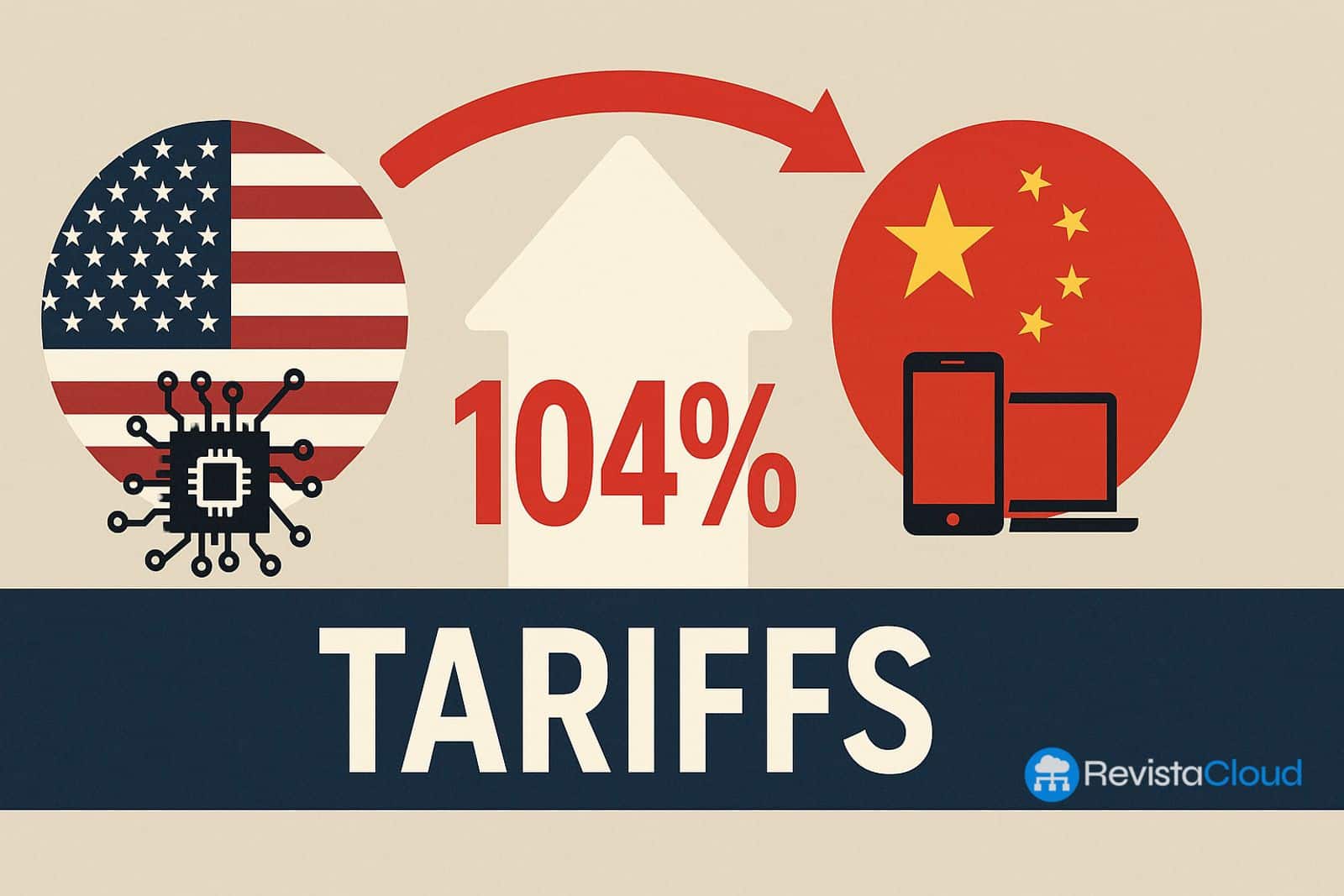The impact of the new trade escalation is already being felt by Apple, Nvidia, and other tech companies. Neither the U.S. nor China will emerge unscathed.
The tech sector is once again a pawn of geopolitics. The Trump administration has officially announced a new tariff package of 104% on technology imports from China this week, a measure aimed at pressuring Beijing but which, in practice, strikes directly at the entire global value chain in technology. In the short term, no one wins.
A game-changing blow that destabilizes the entire industry
The new tariffs affect hardware manufactured in China, including semiconductors, electronic devices, components, and machinery, with an immediate impact on companies like Apple, NVIDIA, Amazon, Intel, ASML, and Microsoft. The market has already reacted: Apple fell by 5% in a single day, losing its status as the most valuable company in the world. NVIDIA dipped by 1.3%, while Amazon and Alphabet also closed in the red.
This new tax means that products like an iPhone, which costs $1,200, could exceed $3,000 after adding tariffs, taxes, and logistical costs. The psychological effect has been immediate: pre-orders are skyrocketing in the U.S. due to fears of unprecedented price increases.
The dream of reshoring production to the U.S.: a short-term illusion
The Trump narrative centers on repatriating the manufacturing of devices. However, the industrial reality tells a different story. The technological production ecosystem, especially in mobile phones and semiconductors, is deeply embedded in Asia. And while TSMC and Intel are already working on a joint plant on U.S. soil, experts say it won’t be fully operational for several years.
China, for its part, has been preparing for this scenario for some time. It has diversified its chip industry, strengthened its assembly capability, and reinforced alliances with countries like Vietnam and Malaysia. While the tariff affects short-term, it also accelerates the disconnection from the U.S. and the development of a sovereign technology made in China.
Everyone loses, including the consumer
The most concerning aspect for the sector is that there are no clear winners. The United States seeks to protect its industry, but it does so by raising prices for its own citizens. Companies, in turn, see their profitability, access to markets, and innovation capabilities impacted. And ultimately, the consumer will end up footing the bill.
Analysts summarize it like this: “Trump has declared a total trade war, and the battlefield is technology. But this is not a war with a swift victory: it is one where all parties end up losing, at least in this initial phase.”
A new global tech order is in the making
What seems like a tactical move could trigger a structural transformation. If Apple, Google, or Amazon begin to reconfigure their production, if China advances in its technological independence, and if other countries like India or Vietnam gain traction, we could be witnessing the end of global tech hyperconnectivity as we know it.
And while new, more diversified balances may emerge in the long term, the immediate scenario is clear: uncertainty, inflationary pressure, disruptions in the supply chain, and diminished shared innovation capacity.
Conclusion: The 104% tariff is not just a number. It is a symbol of how technology has become the center of geopolitical disputes in the 21st century. And for now, the only tangible effect is that everyone —governments, companies, and users— will end up losing.

